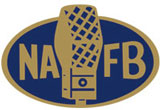 The National Association of Farm Broadcasting has just released the results their Media Usage Update Survey. The internet continues to make inroads as a farmer’s source for news and information and mobile devices are gaining steam too. But as you’ll find in the results you’ve still got your farmers out there who don’t even use a computer much less the internet. So what does it all mean? Just from looking at the quick results released it looks to me like farmers are following along with the general population. They still use traditional media but are increasingly using new communications channels. I don’t know if the survey breaks out categories of income by number but I’d guess the higher the farmer income, the greater their use of internet and mobile.
The National Association of Farm Broadcasting has just released the results their Media Usage Update Survey. The internet continues to make inroads as a farmer’s source for news and information and mobile devices are gaining steam too. But as you’ll find in the results you’ve still got your farmers out there who don’t even use a computer much less the internet. So what does it all mean? Just from looking at the quick results released it looks to me like farmers are following along with the general population. They still use traditional media but are increasingly using new communications channels. I don’t know if the survey breaks out categories of income by number but I’d guess the higher the farmer income, the greater their use of internet and mobile.
Today’s top agricultural producers remain engaged consumers of business-related information. And while sources and channels for that information have proliferated, research conducted in late 2011 reveals strong dependence upon producers’ favored first and second media preferences.
The national sample of 1,504 producers – farmers and ranchers – required a gross farm income of at least $100,000 and is proportionately representative by each state to the Agriculture Census. The surveyed producers were not drawn from a subscriber list or circulation, or a listener or viewer audience; the statistically valid sample is from the national database of Farm Market iD. The survey was developed by Ag Media Research, Sioux Falls, S.D.
Producers remain devoted to the “traditional” farm media they trust, as the Internet otherwise continues to draw traffic and targeted searches for desired information. In fact, on a daily basis, farm radio and the Internet (accessed from home/office) are easily the two most-used agri-media channels. For those choosing either radio or the Internet as their first choice, farm television is the preferred second daily information source. Among information sources used at all (not specific to daily or any time frame), farm-title publications – newspapers and magazines – garner the highest numbers.
Additional findings of the Media Usage Update Survey study as well as raw survey data and available cross-tabulated findings, including geography and age-specific results, are available by contacting becki@nafb.com or at (816) 431-4032. The data is projectable to each state and by county within a state.

